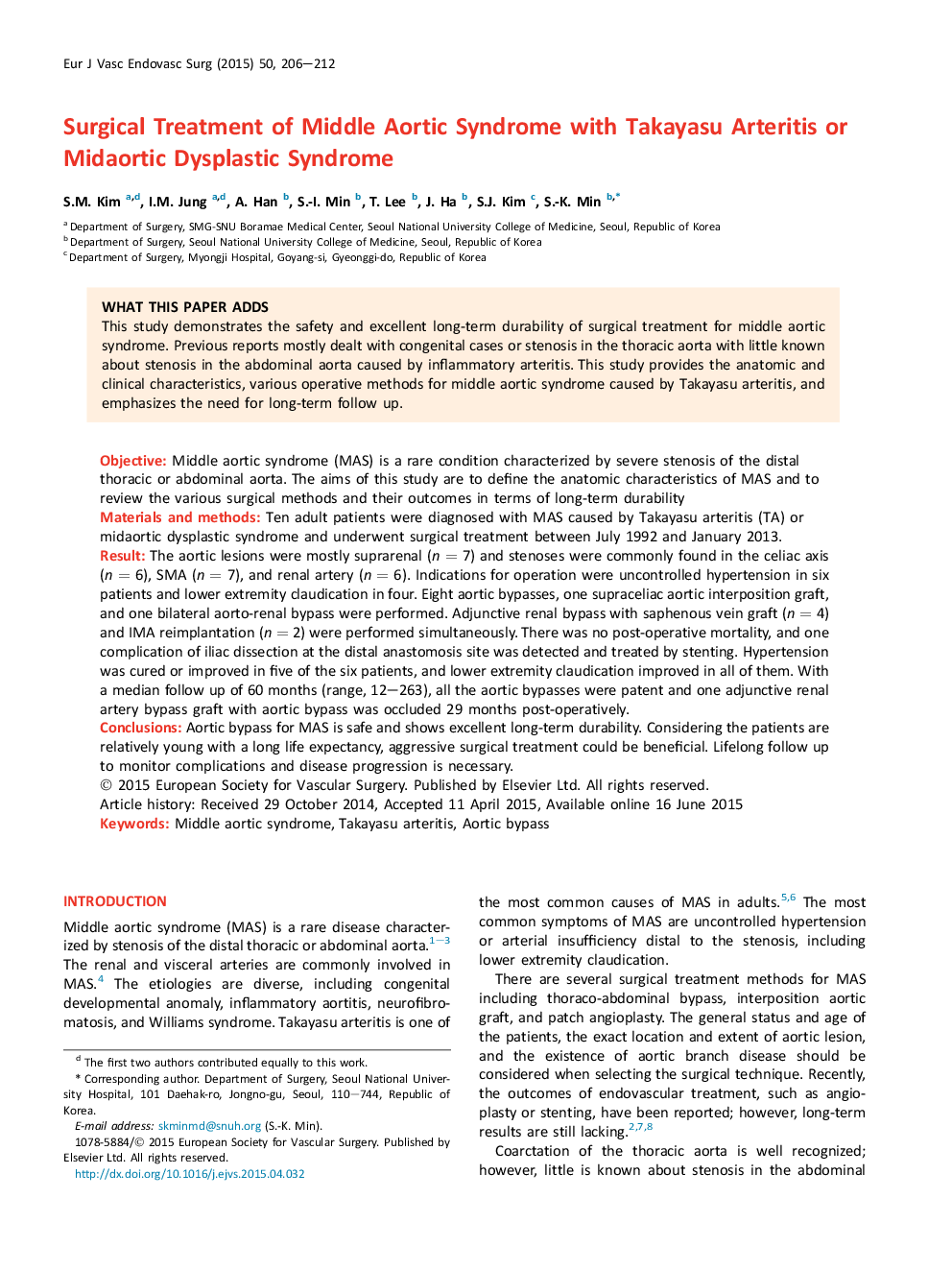| Article ID | Journal | Published Year | Pages | File Type |
|---|---|---|---|---|
| 2911826 | European Journal of Vascular and Endovascular Surgery | 2015 | 7 Pages |
ObjectiveMiddle aortic syndrome (MAS) is a rare condition characterized by severe stenosis of the distal thoracic or abdominal aorta. The aims of this study are to define the anatomic characteristics of MAS and to review the various surgical methods and their outcomes in terms of long-term durabilityMaterials and methodsTen adult patients were diagnosed with MAS caused by Takayasu arteritis (TA) or midaortic dysplastic syndrome and underwent surgical treatment between July 1992 and January 2013.ResultThe aortic lesions were mostly suprarenal (n = 7) and stenoses were commonly found in the celiac axis (n = 6), SMA (n = 7), and renal artery (n = 6). Indications for operation were uncontrolled hypertension in six patients and lower extremity claudication in four. Eight aortic bypasses, one supraceliac aortic interposition graft, and one bilateral aorto-renal bypass were performed. Adjunctive renal bypass with saphenous vein graft (n = 4) and IMA reimplantation (n = 2) were performed simultaneously. There was no post-operative mortality, and one complication of iliac dissection at the distal anastomosis site was detected and treated by stenting. Hypertension was cured or improved in five of the six patients, and lower extremity claudication improved in all of them. With a median follow up of 60 months (range, 12–263), all the aortic bypasses were patent and one adjunctive renal artery bypass graft with aortic bypass was occluded 29 months post-operatively.ConclusionsAortic bypass for MAS is safe and shows excellent long-term durability. Considering the patients are relatively young with a long life expectancy, aggressive surgical treatment could be beneficial. Lifelong follow up to monitor complications and disease progression is necessary.
